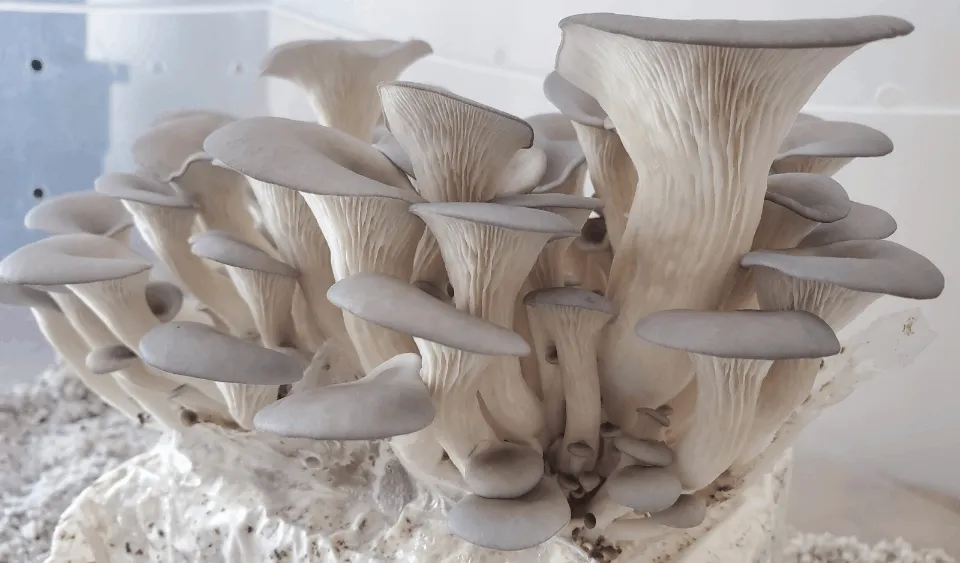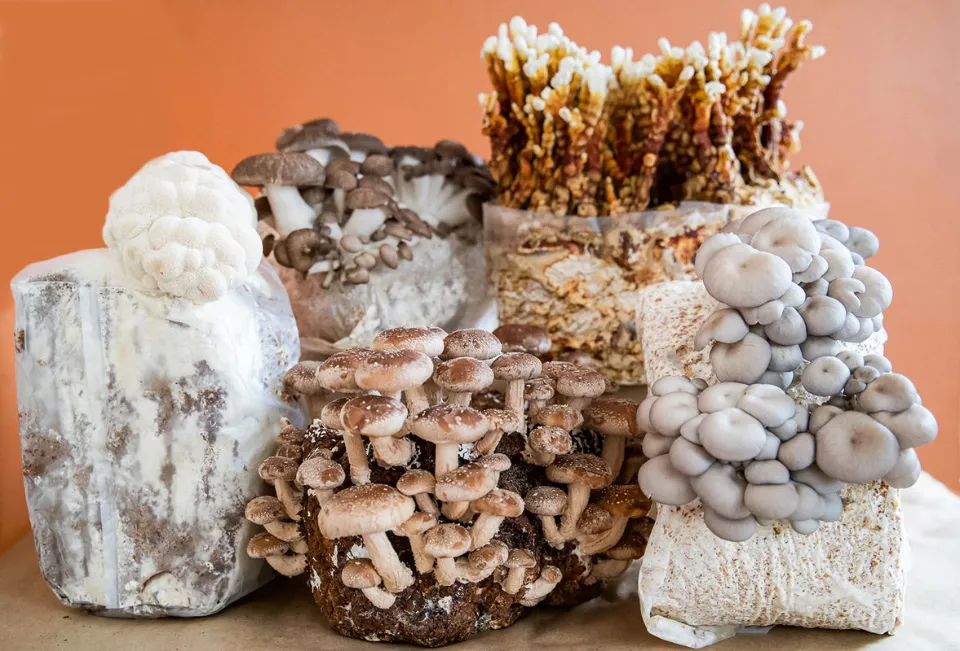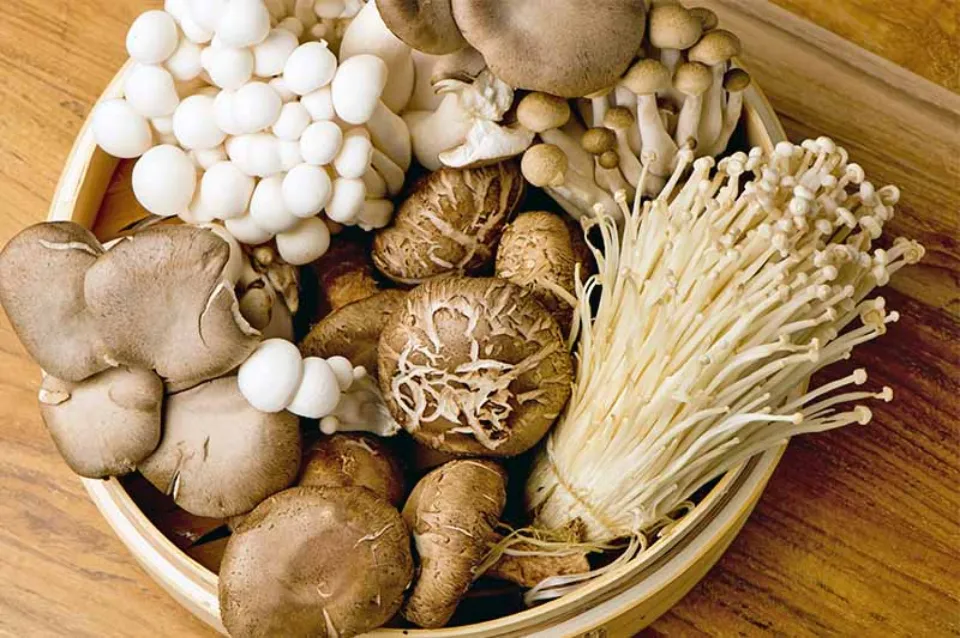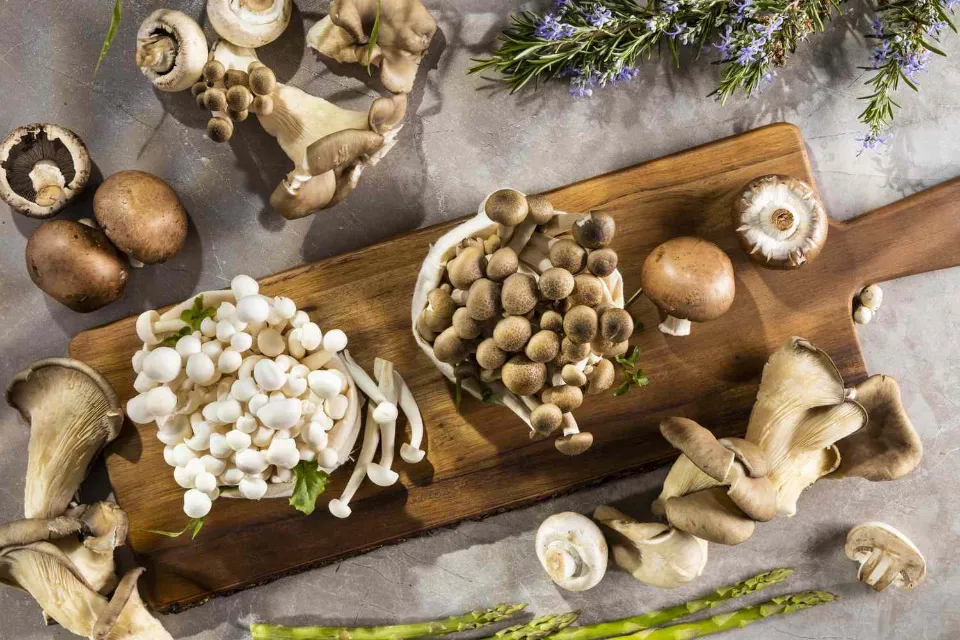Everything you need to know about mushroom kits is provided below. Continue reading to learn more about how many microscopic spores are present in each morel mushroom.
While in the wild, these spores travel through the air, you must capture them in a slurry in order to grow morels where you want them.
For more information, keep reading.
Table of Contents
Are Mushroom Kits Any Good?
Mushroom grow kits are a great project for seasoned gardeners, beginners, or as a project for kids. In essence, they are mushroom mycelium growing on sawdust, straw, or any other substrate. Just before the mushrooms start to grow and take shape, the kit is intended to be delivered to you.
Can You Use Mushroom Grow Kit as Spawn?
In other words, the kit is spawn-able! Simply break up the kit into tiny mycelium pieces and add them to a substrate that has been properly prepared, like pasteurized straw, to accomplish this. The mycelium ought to carry on and begin colonizing the fresh substrate.

How Many Times Can You Use a Mushroom Kit?
Mushroom kits are not reusable, but most of them produce at least 2 harvests’ worth of mushrooms. This means that you can get multiple harvests out of a single kit before needing to replace it. A mushroom block can be buried to continue receiving flushes from the soil surface after it stops producing mushrooms.
Should Mushroom Kits Be Kept in Dark?
Your mushroom kit does not need to be kept in the dark, but under no circumstance should you allow direct sun light to shine into your mushroom kit. Your kit may become overheated, dried out, or even destroyed by the sun. Ambient light will cause Portabella mushroom caps to become darker brown in color.
How Much Does a Mushroom Kit Yield?
Expect to grow: 2-3 harvests of mushrooms / 150g – 300g
The first flush will always be the biggest. While some of our customers have grown up to four flushes of mushrooms using our kits, on average, you’ll only get two harvests. Once the kit has run out of nutrients and water it will be “spent” and won’t produce any more mushrooms.

Where is the Best Place to Put a Mushroom Kit?
Place your grow kit in your kitchen, out of direct sunlight. This will enable you to keep an eye on them and remember to regularly mist your grow kit to maintain a high humidity level. Keep your grow kit away from windy areas because the wind will dry it out. Because mushrooms require good ventilation, avoid setting up your grow kit in a closed area.
What results do fake morel mushrooms have?
What ailments result from consuming fake morels? Symptoms include nausea, vomiting, abdominal pain, diarrhea, dizziness, headache, muscle cramps, bloating, and fatigue. Untreated individuals may eventually experience delirium, coma, seizures, and confusion.
Morel Mushroom Care
Light
In the shaded illumination of forests, morels flourish. They grow under and around deciduous trees such as elm, ash, alder, apple, and oak, frequently appearing before these trees have leafed out. Fungi species, like morel mushrooms, don’t produce chlorophyll like plants do. Rather than promoting mushroom growth, the sun’s light contributes to soil warming.
Soil
There is a reason why morel mushroom clusters appear around burned, dead, and decaying trees. The nutrients released by dying trees and the leaf litter of the forest create the loamy soil that morel mushrooms thrive in. Wood chips, wood ash, peat moss, and sand are also desirable soil additives for growing morels. In the area where a tree stump is located, many homeowners have success growing morels. Alternately, you could prepare the soil by adding a lot of oak, elm, or ash tree wood chips that have decomposed.
Water
Regular moisture is very important to a morel mushroom’s growth. Your morel growing area should be about as moist as a sponge that has been wrung out. Watering with captured rainwater is preferred to chlorinated tap water.
Temperature and Humidity
Cool, moist climates are ideal for morel mushroom growth. The morel growing and harvesting season will be extended by the typical springtime weather of warm days between 60 and 70 degrees Fahrenheit and cool evenings in the 40s with sporadic rain and cloudy days. Conversely, morels quickly wilt away during a dry, hot season.
Fertilizer
Good soil is all the fertilizer morel mushrooms need. Compost, leaf mold, wood ash, and composted manure are all appropriate enrichments for morel mushroom beds.

What to Consider When Buying a Mushroom Growing Kit
Mushroom variety: Shiitake mushrooms and white button mushrooms are just a couple of the many varieties of mushroom kits. When choosing which type of kit to buy, consider what you prefer eating or maybe a variety that’s hard to find in your local stores. Your choice of mushroom will affect how long it takes to grow your kit, how many mushrooms you get, and how the mushrooms grow. Varieties like morels will be much harder to grow because they are not usually cultivated and have a very long growing cycle of at least two seasons, while shiitake mushrooms or oyster mushrooms have a much shorter growing cycle of about a week.
Cost: The cost of mushroom growing kits varies (our top choices here cost between $20 and $60). Your choice of mushroom and the substrate it is packaged in will affect the price. In our investigation, we discovered that more distinctive mushrooms from smaller farms cost more than more typical mushrooms from more commercial companies, which is consistent with shopping at a farmer’s market or grocery store. Keep in mind that most mushroom growing kits cost more than simply buying grown mushrooms, but they give you the advantage of learning the art of mushroom growing and controlling what goes into your mushroom’s growing environment.
Growing location: The majority of mushroom kits are for indoor use only, but some kits, like the Gourmet Mushroom Backyard Morel Mushroom Growing Kit, require you to have an outdoor space where you can plant mushroom spawn. When growing indoors or outdoors, consider the kit’s space needs and ideal humidity levels before buying to make sure you can take good care of it.
Timing: While some kits must be used right away, others can wait up to six months before being used. If your schedule is erratic, pick a kit that can be kept for a while before use to prevent rot.
Disposal: As perennial plants, mushroom kits stop producing mushrooms after a couple of successful harvests. Keep in mind that once you’re done with your mushroom kit, you’ll need to dispose of it. “Just because that mushroom kit is done fruiting, it doesn’t mean that it isn’t a useful thing,” says Steve Gabriel. “By decomposing organic matter, mushrooms help to create soil.” Rather than tossing it in the trash, consider finding a place to compost your mushroom kit, whether in your backyard or at your local farmer’s market.



